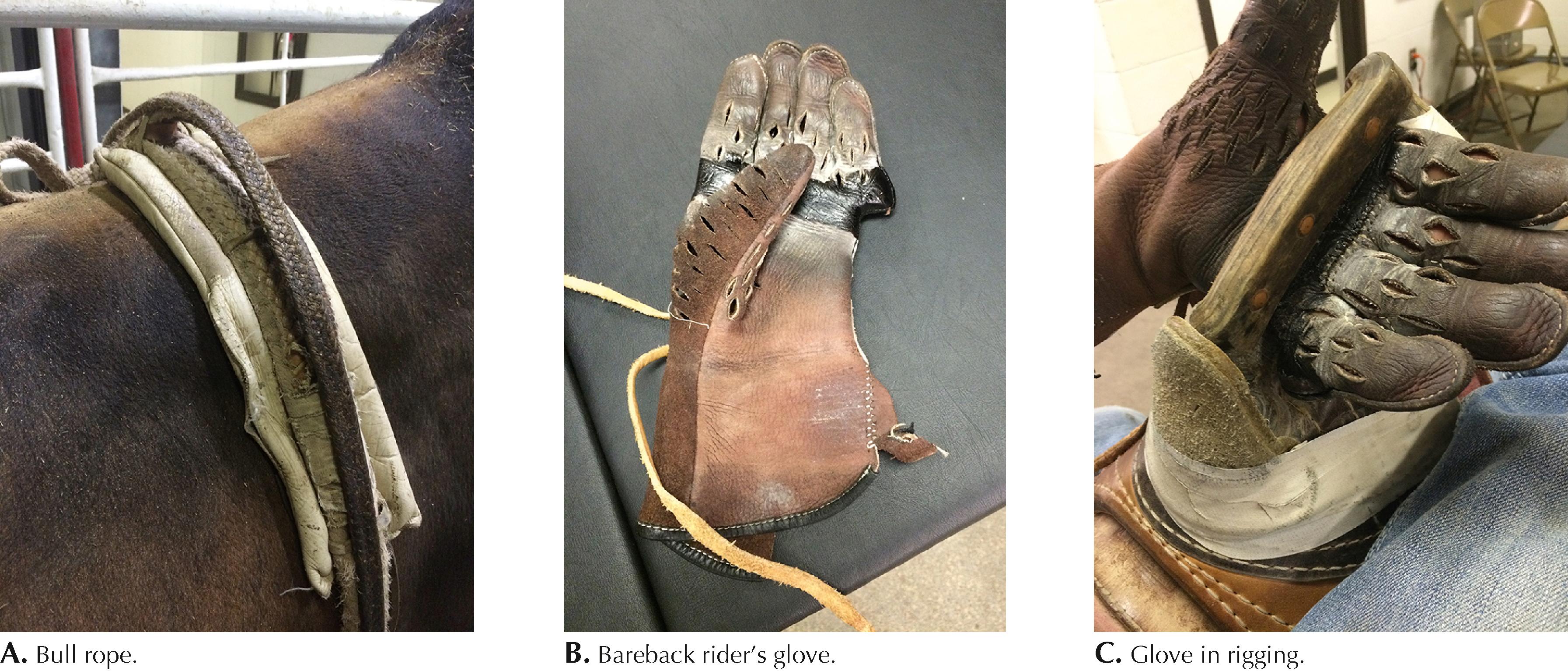Physical Address
304 North Cardinal St.
Dorchester Center, MA 02124
Rodeo is a competitive sport with participants of all ages and at all competition levels.
Athletes may compete in a single event or multiple events and may attend anywhere from one to four or five events in a single weekend.
Most events are derived from skills needed to work cattle.
The composite injury rate for professionals is 16.6/1000 competitor exposures and for high school competitors is 8.2/1000 competitor exposures.
The incidence of catastrophic injury is around 20/100,000, with a fatality rate of 7.29/100,000.
The highest injury rates are found in roughstock events, with bull riding injury rates twofold greater than those in any other major rodeo event.
When compared with the injury rates of all other contact sports, bull riding ranks as the most dangerous.
Description: An 8-second duration is required for a qualified ride; one arm holds on to the animal, while the other is free and is not allowed to contact the animal. The score is based on the performance of the athlete and animal.
Bull riding: The rider hangs onto a rope tied to a bull ( Fig. 100.1A ).

Saddle bronc: The rider seated in a saddle, holding onto a rope attached to a halter.
Bareback riding: The rider holds on to a rigging attached to a horse’s back (see Fig. 100.1B and C ).
Steer riding: The rider hangs onto a rope tied to the steer (usually an event for younger athletes before starting bull riding).
Quickest time wins.
Steer wrestling: While atop a galloping horse, the athlete slides his or her arms onto the neck of a steer and throws it to the ground.
Calf roping: While riding a horse, the athlete ropes a calf, dismounts, and ties three of the four legs together.
Team roping: The header ropes the head of a steer, while the heeler ropes the heels.
Barrel racing: The rider races around three barrels in a cloverleaf pattern.
Steer roping: Similar to calf roping, except with a steer.
Goat tying: A youth event similar to calf roping.
Breakaway roping: Similar to calf roping, but the calf is not thrown and tied.
Pole bending: Riding a horse through six poles in a pre-established pattern.
Cutting: The rider separates a single animal from a herd.
Some rodeos are well covered by medical staff and services, but many are not covered at all, or maybe only by an ambulance crew.
May be difficult to arrange follow-up care, as many rodeo athletes travel to multiple sites. Acute injuries commonly become chronic because of lack of or inadequate treatment in addition to pressure of competing.
Rodeo athletes pay entrance fees to each rodeo; a withdrawal because of injury results in the loss of money. Competition is the best way to acquire skill and leads to greater exposure to risk.
An athlete may request a medical release if unable to perform, but medical personnel cannot prevent an athlete from participating.
Thoracic compression is the most common cause of catastrophic injury.
Unknown to what degree a rodeo protective vest reduces injury
Roughstock athletes most common injuries: Contusion, concussion, sprains
Timed athletes: Sprains, strains, contusions
Concussion
Many know signs and symptoms of concussion, but may not report to medical staff
“Rodeo SCAT” modifies Maddock’s questions to the sport of rodeo. (What rodeo are you at? What was your score/time? Where did you compete last? Who is traveling with you?)
Bareback riders experience 46× g of head acceleration, and bull riders experience 26× g (football players experience 21–23× g consistently and may sustain hits of 98–102× g ).
In bull riding, helmet use does appear to reduce incidence of both catastrophic injury and fatality, currently required for those 18 years of age and younger, optional for those older than 18.
Thumb amputations—combination of crush and avulsion mechanisms occurs in roping athletes, with high incidence of infection and failed replantation
Pectoralis major/latissimus dorsi tendon ruptures—occurs in steer wrestling and is managed by surgical fixation
Femoral acetabular impingement—exacerbated in the roughstock riding position
Chronic neuropraxias
Methicillin-resistant Staphylococcus aureus (MRSA)—livestock are frequently colonized; infections can be transmitted in both directions
Become a Clinical Tree membership for Full access and enjoy Unlimited articles
If you are a member. Log in here